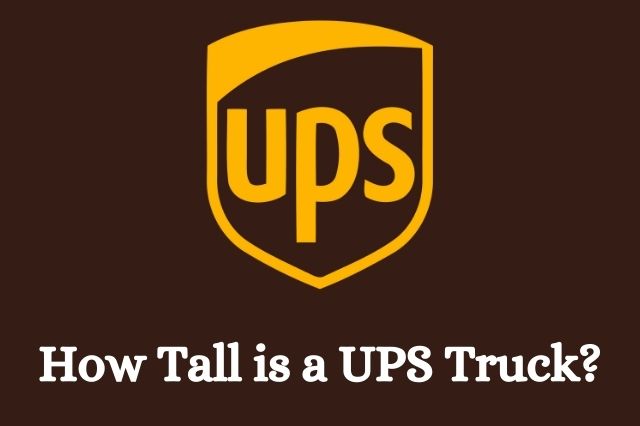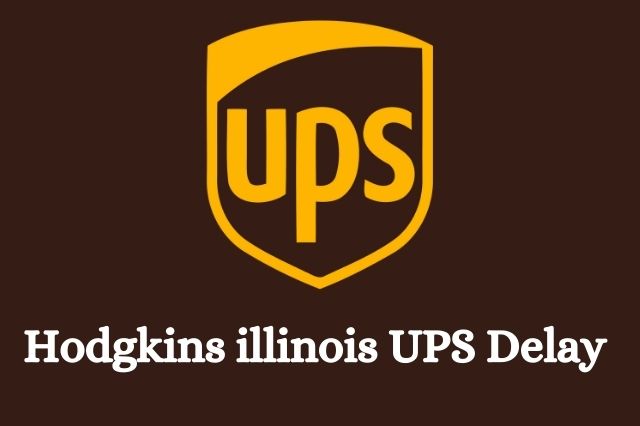Nowadays, internet buyers expect to get what they want when they want it, no matter where they are in the world. Are you aware of the height that a delivery vehicle can reach?
U.S. Postal Service, Inc. (UPS) is an abbreviation for United Parcel Service, Inc. (often known as UPS). UPS, a publicly-traded company, provides logistics services such as courier express and freight forwarding.
Nonetheless, there is no cause for alarm. You can contact us via email at the bottom of this article.

Importance of knowing the height of UPS trucks
Knowing the height of UPS trucks holds significant importance for various reasons, primarily centered around safety, efficiency, and infrastructure compatibility. Safety is paramount when it comes to road transportation.
Knowing the exact height of UPS trucks is crucial to prevent accidents, especially when passing under bridges, tunnels, overpasses, and other low-clearance structures. Awareness of the truck’s height helps drivers choose routes that can accommodate their vehicles safely.
Efficiency in delivery operations is another key factor. Knowing the truck’s height allows UPS to optimize routes that minimize height-related detours and delays. This streamlines the delivery process and ensures packages reach customers in a timely manner.
Moreover, understanding truck height is vital for maintaining the condition of both the vehicles and the surrounding environment. By avoiding routes with insufficient clearance, UPS can prevent damage to their trucks and potential damage to infrastructure like bridges.
Furthermore, adhering to height restrictions contributes to the overall reputation of UPS as a responsible and safety-conscious transportation provider. It demonstrates the company’s commitment to road safety, compliance with regulations, and respect for the communities they serve.
Height restrictions for UPS delivery trucks
Height restrictions for UPS delivery trucks are crucial guidelines that dictate the maximum vertical clearance a UPS vehicle can have while navigating roadways, bridges, tunnels, and other structures. These restrictions are in place to ensure road safety, prevent accidents, and protect infrastructure.
Adhering to height restrictions is essential because exceeding them can lead to collisions with overpasses, bridges, or low-clearance structures, causing damage to both the vehicle and the structure itself. This can disrupt traffic, result in costly repairs, and pose a danger to drivers and other road users.
UPS delivery trucks are designed and manufactured with specific dimensions, including height, to comply with these restrictions. The company emphasizes driver training to raise awareness about height limitations and educate drivers on how to navigate routes safely.
Route planning software and GPS navigation systems equipped with height information help UPS drivers avoid roads with height limitations that their trucks cannot safely pass through. This proactive approach ensures that the chosen routes are compatible with the vehicle’s height, minimizing the risk of accidents.
By adhering to height restrictions, UPS upholds its commitment to road safety, responsible driving practices, and maintaining the integrity of the transportation infrastructure. This dedication contributes to efficient and reliable package delivery while prioritizing the safety of drivers, other road users, and the community at large.
Safety considerations for tall UPS trucks
Safety considerations for tall UPS trucks are of paramount importance to ensure the well-being of drivers, the public, and the integrity of infrastructure. These considerations are particularly crucial due to the potential risks associated with operating vehicles that exceed standard height limits.
Firstly, proper driver training is essential. UPS emphasizes educating drivers about the specific handling and navigation requirements for tall trucks. Drivers are trained to be vigilant, cautious, and aware of the truck’s height limitations to prevent collisions with overhead structures.
Secondly, route planning plays a significant role. Utilizing advanced GPS systems that include height data helps drivers select routes that avoid low-clearance areas. This proactive approach minimizes the chances of encountering obstacles that the truck cannot safely pass under.
Regular vehicle maintenance is another safety consideration. Ensuring that the truck’s suspension, tires, and other components are well-maintained contributes to stable handling and control, especially when encountering uneven road surfaces or changes in elevation.
Additionally, clear communication between drivers and dispatchers is crucial. Drivers must feel comfortable discussing any concerns about route changes, unexpected obstacles, or potential height-related issues.
By adhering to safety considerations, UPS not only safeguards its employees and equipment but also maintains a reputation for responsible road use. This commitment to safety enhances public trust, ensures timely package deliveries, and helps prevent accidents that could disrupt traffic and cause infrastructure damage.
Delivery Van or Truck
The step van is a well-known and influential delivery van design on the market today. It’s a lot more than just a package or parcel shipping service. Step vans have a big cargo hold and an open driving area, making them ideal for transporting parcels, linens, and even foodservice products. The step van was initially designed for package delivery operations, but it is now used in various applications.
- Chassis: First and foremost, when looking at step vans, think about your distribution business and how the walk-in van will support its size and volume. Step vans are usually half-ton or one-ton vehicles, with increased payload capacity as the chassis size increases. A company’s delivery frequency and material weight are important considerations when selecting a walk-in van and the team members who will work with it.
- Divide: There’s plenty of room for various products and packaging in the walk-in van cargo area, and the driver can get to the goods from several points, making it more convenient for everyone involved.
A sliding partition allows the driver to quickly unbuckle instead of continuously going around the vehicle to get to the cargo hold, which reduces delivery time while improving production. This high-quality add-on serves a dual purpose by giving the driver access to the cargo hold while shielding him from harm.
While your organization’s product distribution methods must be quick, they must also be secure. Installing the steel or aluminum divider protects the driver from any injury caused by packages shifting while being transported in any way.
Body Length: Delivery vans are available in lengths ranging from 12 to 24 feet and can carry a wide range of goods and materials in their spacious cargo area. Even though your walk-in van is large and convenient, it’s critical to consider both the available and underutilized space.
Too much room can expose your business to product moving and damage your goods more than if everything was tightly packed. Too little room, on the other hand, will impede the efficiency of your operations and delivery. The output and final presentation of your given products can be maximized by identifying your delivery requirements.
Body Height: In addition to the vehicle’s overall length, inside height should be considered while looking for the ideal step van for your business. In general, the internal size of a step van is between 80 and 85 inches, allowing most operators to stand and stroll around the cargo area without fear of sustaining a back or head injury. This additional height aids in the health, efficiency, and readiness of your delivery team.
Cab Type: The stand-or-sit cab type gains even more efficiency with the addition of a walk-in van. As a result of the higher cab, your operator has the option of standing or sitting while operating the vehicle, which enhances its quick-access character. When speedy deliveries are essential – and when aren’t they? – Other delivery systems leave the ability to exit the truck unaffected quickly.
FAQ- Frequently Asked Questions
- What is the height of the truck?
Trucks with closed load bodies or ISO series one freight containers can have an overall height of up to 4.52 meters when equipped with closed load bodies or ISO series one freight containers. In addition, the size of other heavy-duty trucks has been raised from 3.8 to 4 meters.
- What is the most extended straight truck?
State rules entirely decide the size and weight of every container because there are no federal minimums or maximums. The total duration for a straight truck is 40 feet. However, a straight truck that is 40 feet long is the most common length seen on the road today.
- What is a standard-size truck?
That being said, how long is a long bed truck in terms of length? A long bed is approximately 8 feet long, a standard bed is around 6 feet 5 inches long, and a short bed is about 5 feet 8 inches long. Remember that these are average measures and that the precise lengths may vary by a few inches depending on the particular manufacturer.
- What kind of truck do UPS use?
The bodies for UPS delivery vans are manufactured by Morgan Olson (Grumman Olson), Union City Body, and Utilimaster. Unlike older vehicles built on Ford or General Motors P-chassis, vehicles manufactured since the 1990s have been based on Navistar, Freightliner, or Workhorse chassis, respectively.
- How tall is the average delivery truck?
This means that states can set their height restrictions. For the most part, the maximum size is set at 13 feet, 6 inches (4.11 meters); however, there are few exceptions for roads with less clearance.
Final Thoughts:
Ups deliver their parcel on truck or van, but it has a shape and size. You have read this article; you have gained lots of information about Ups truck size and shape. For more information, you can call on UPS help center.




